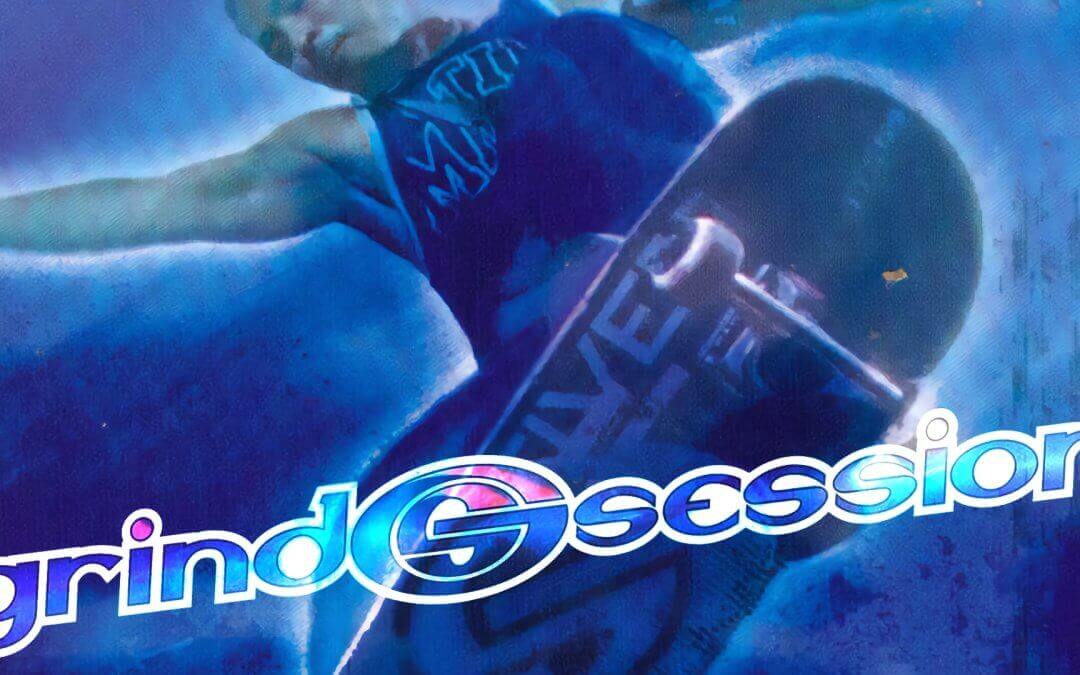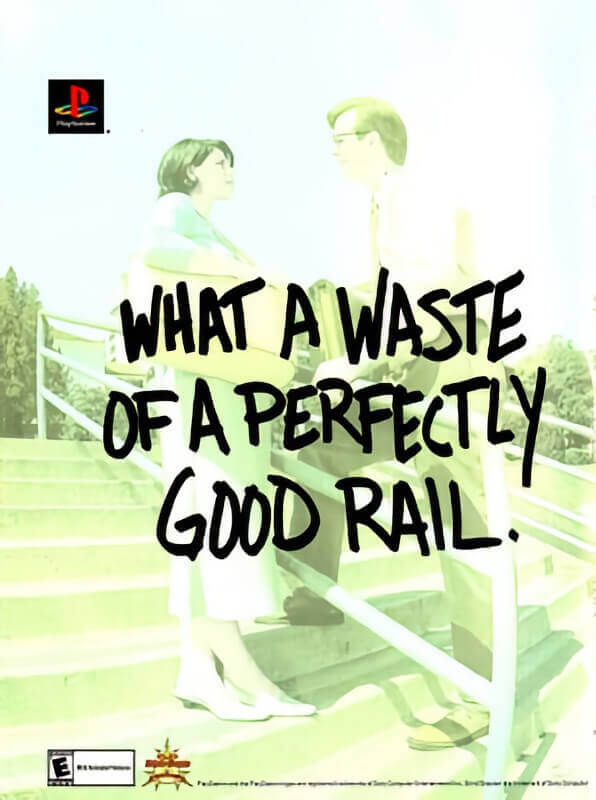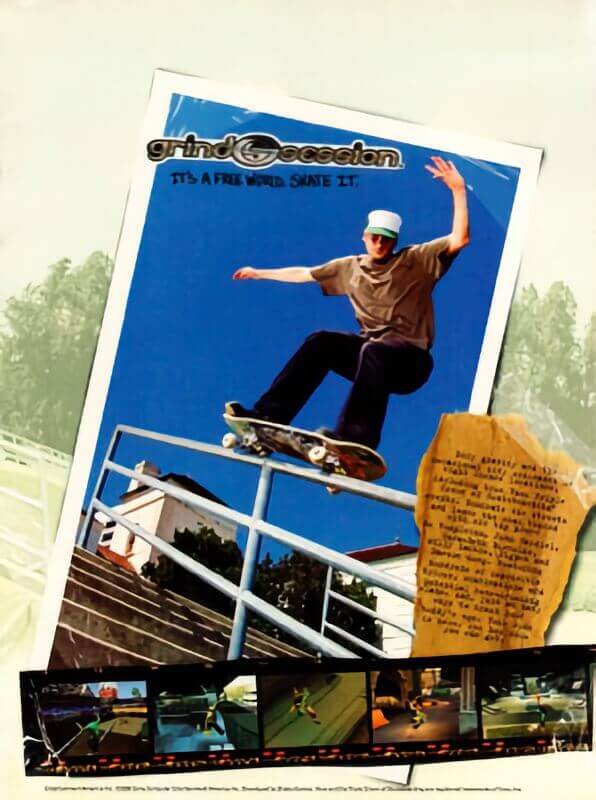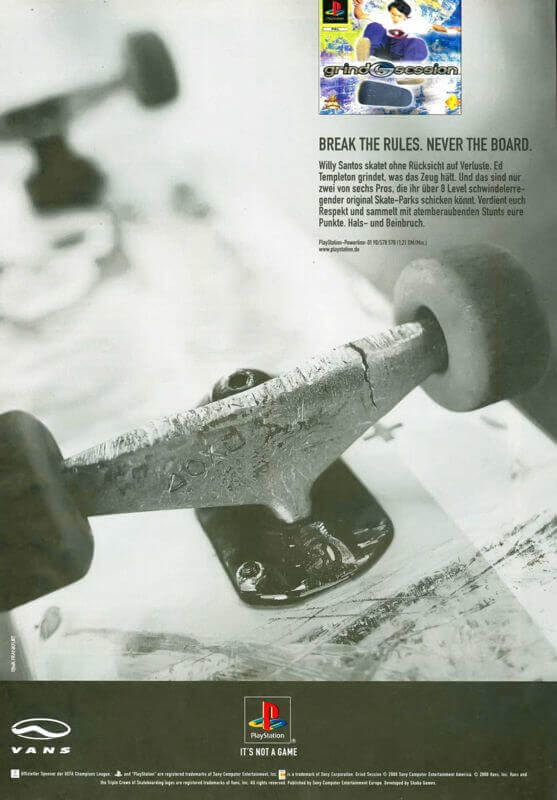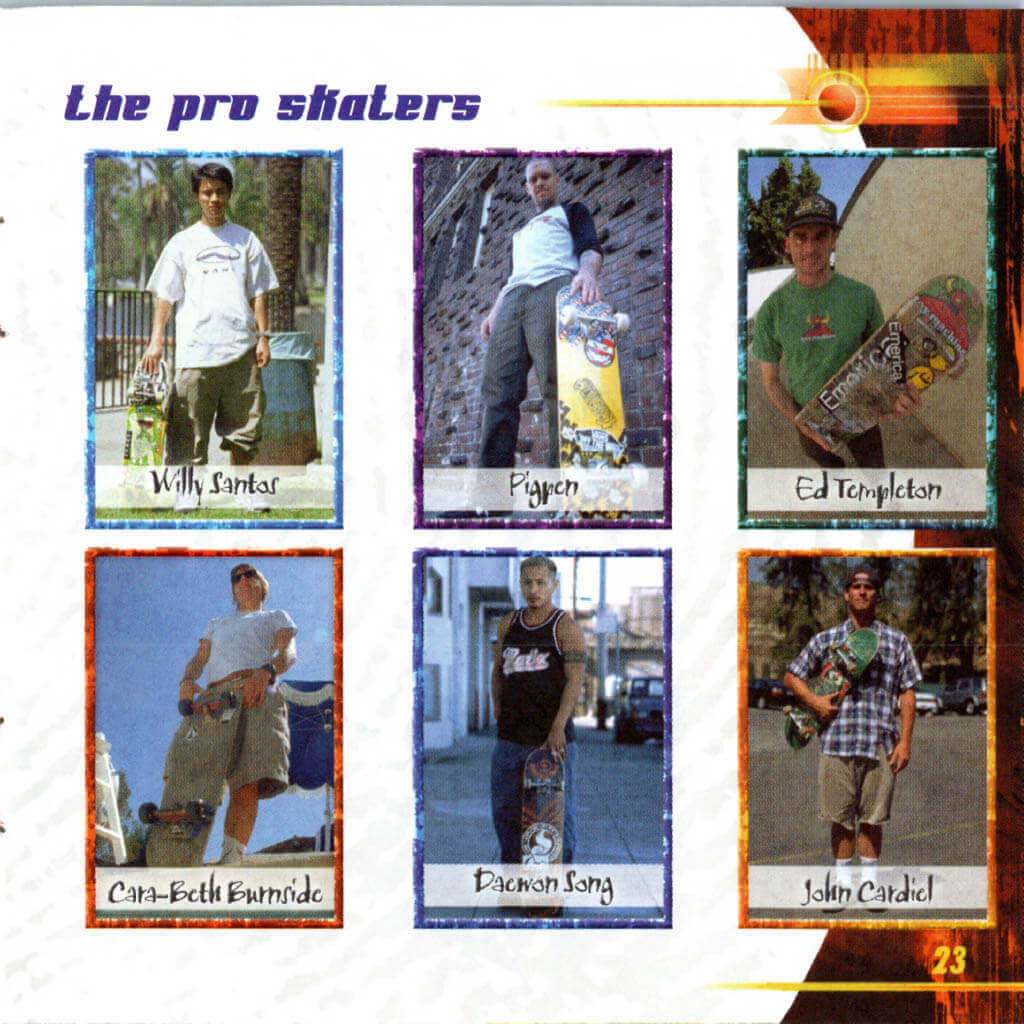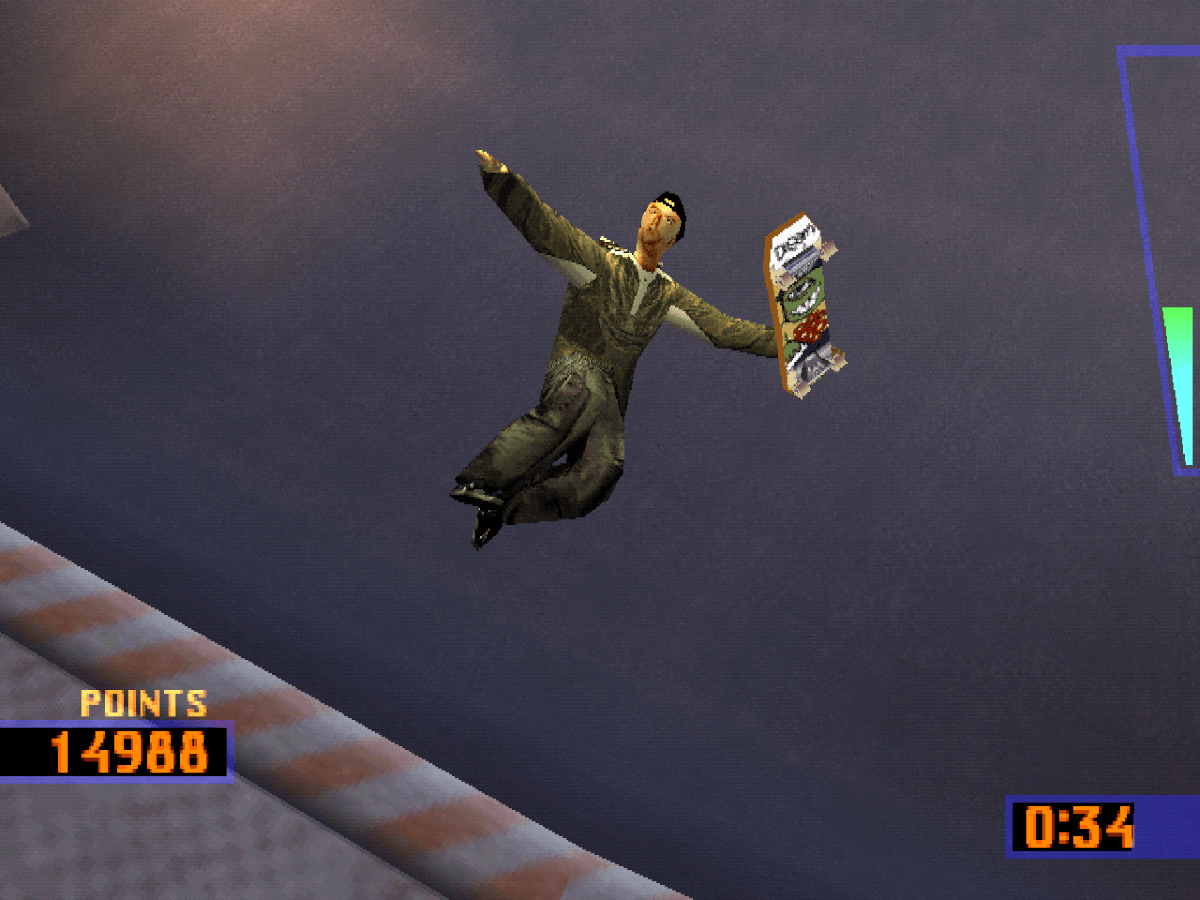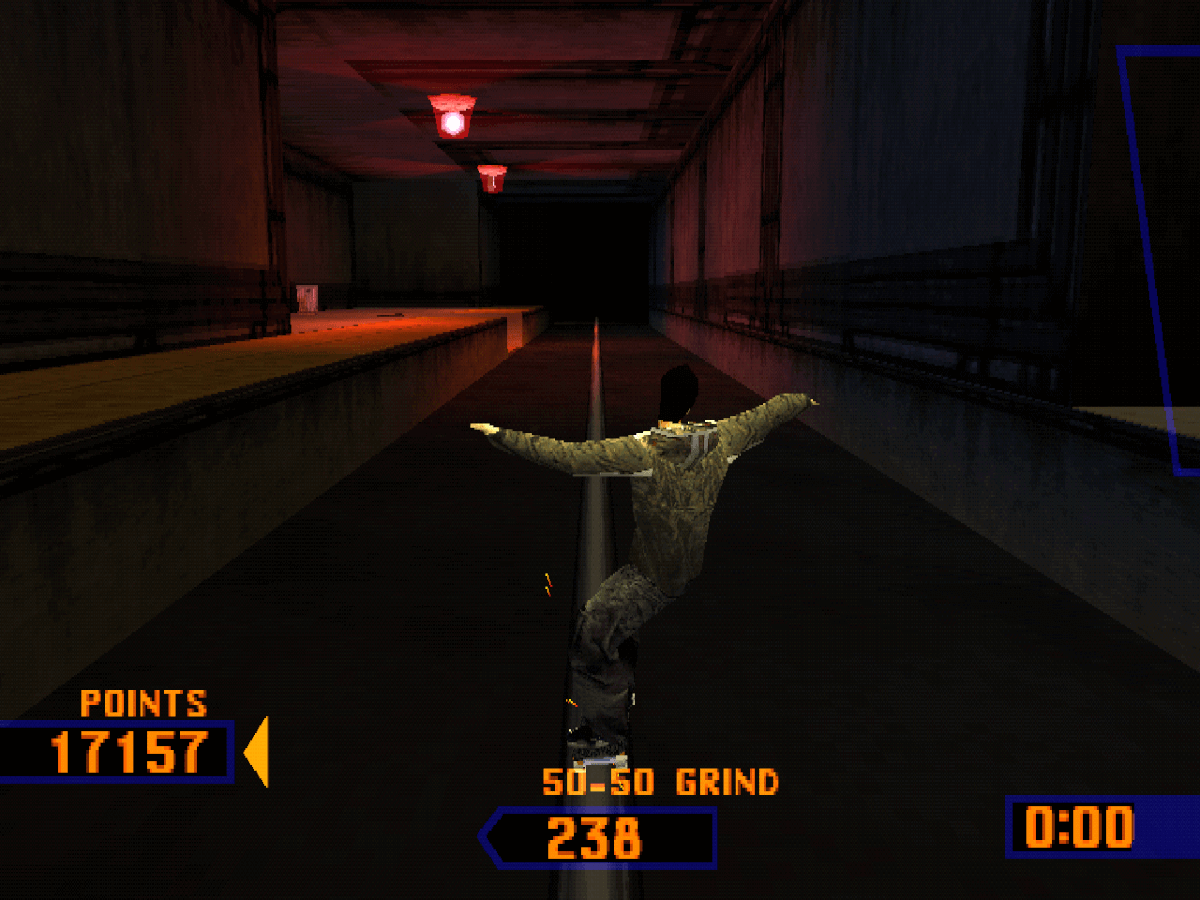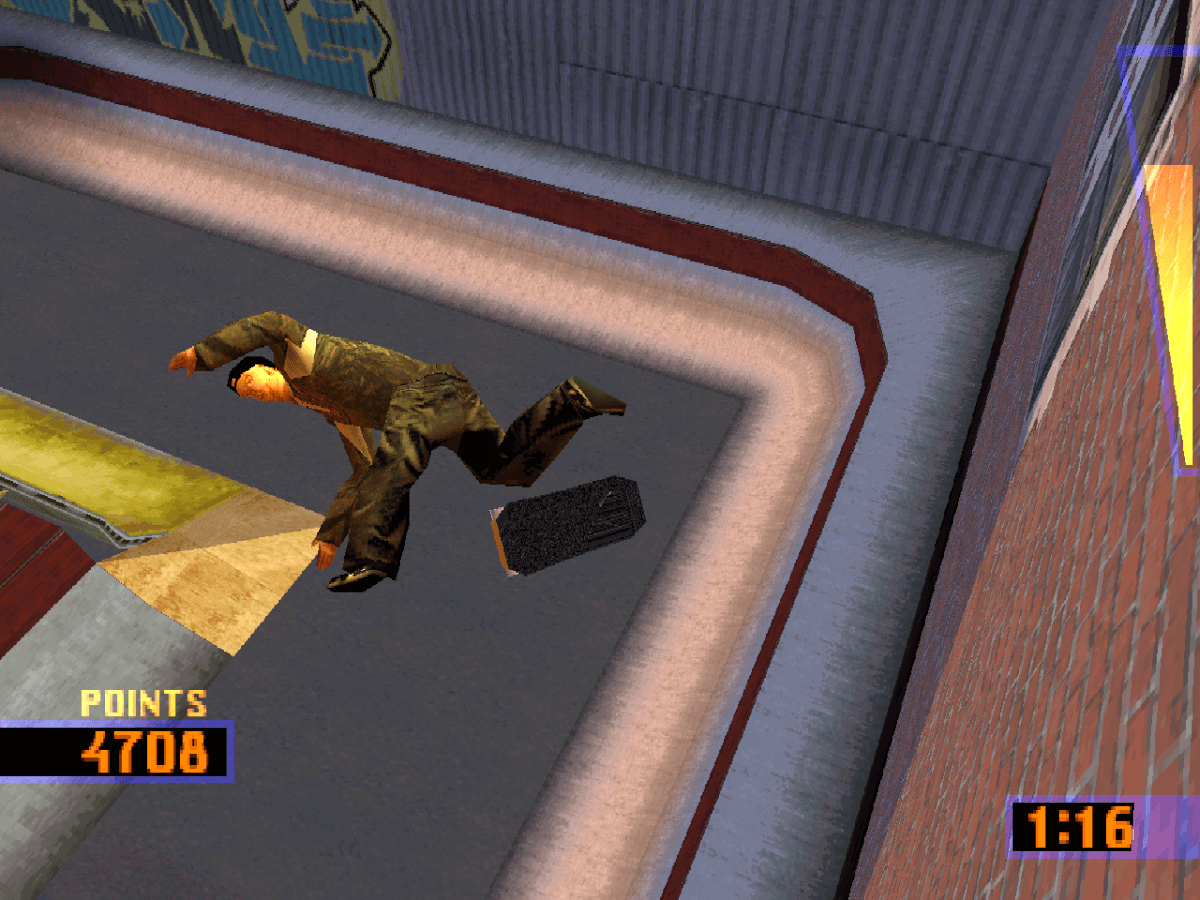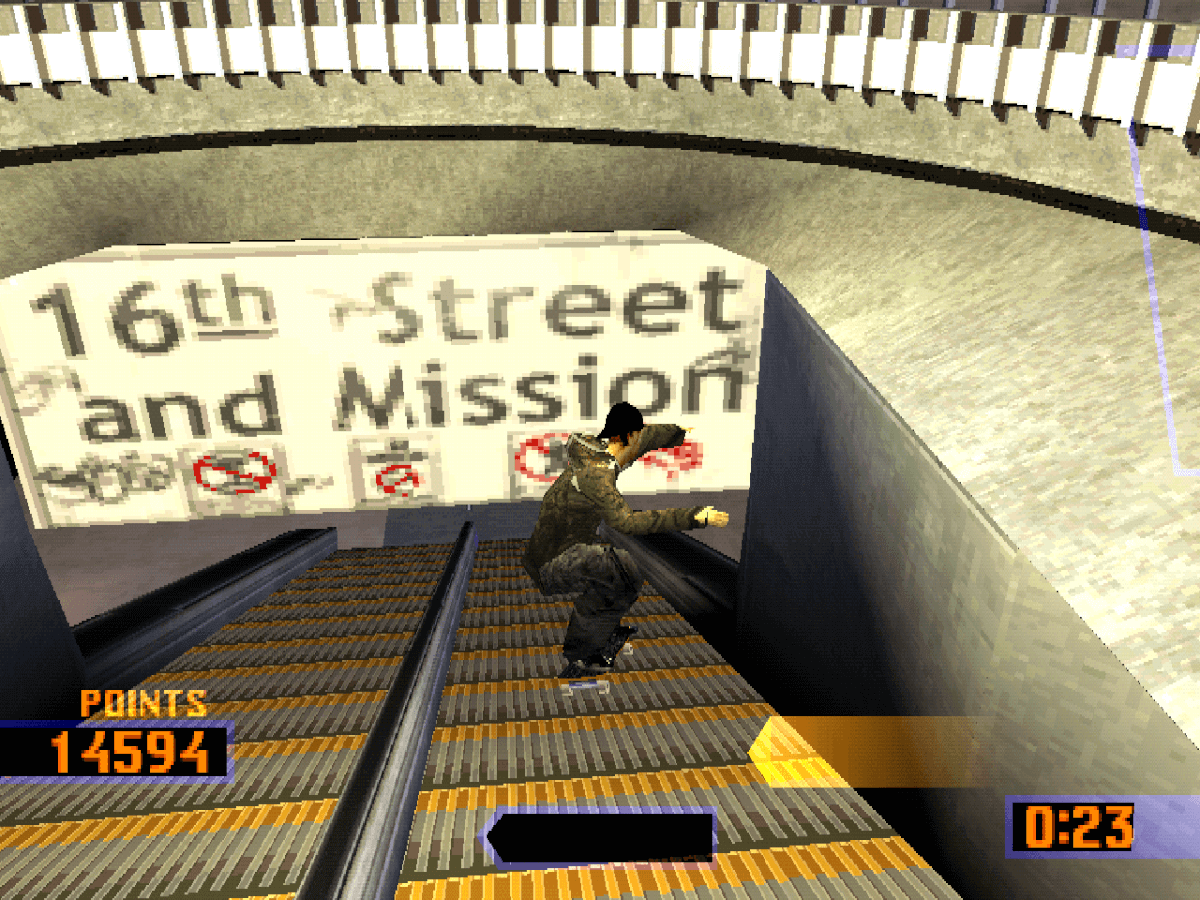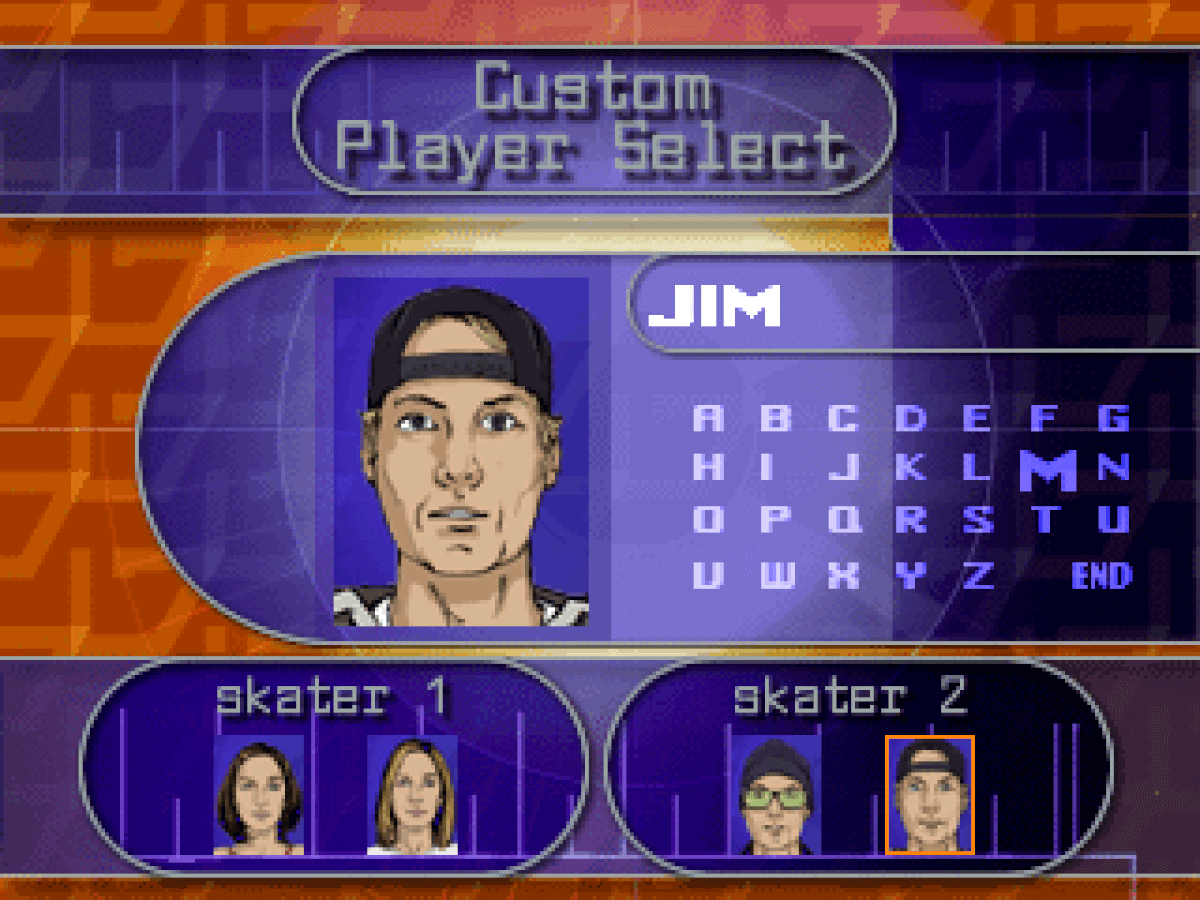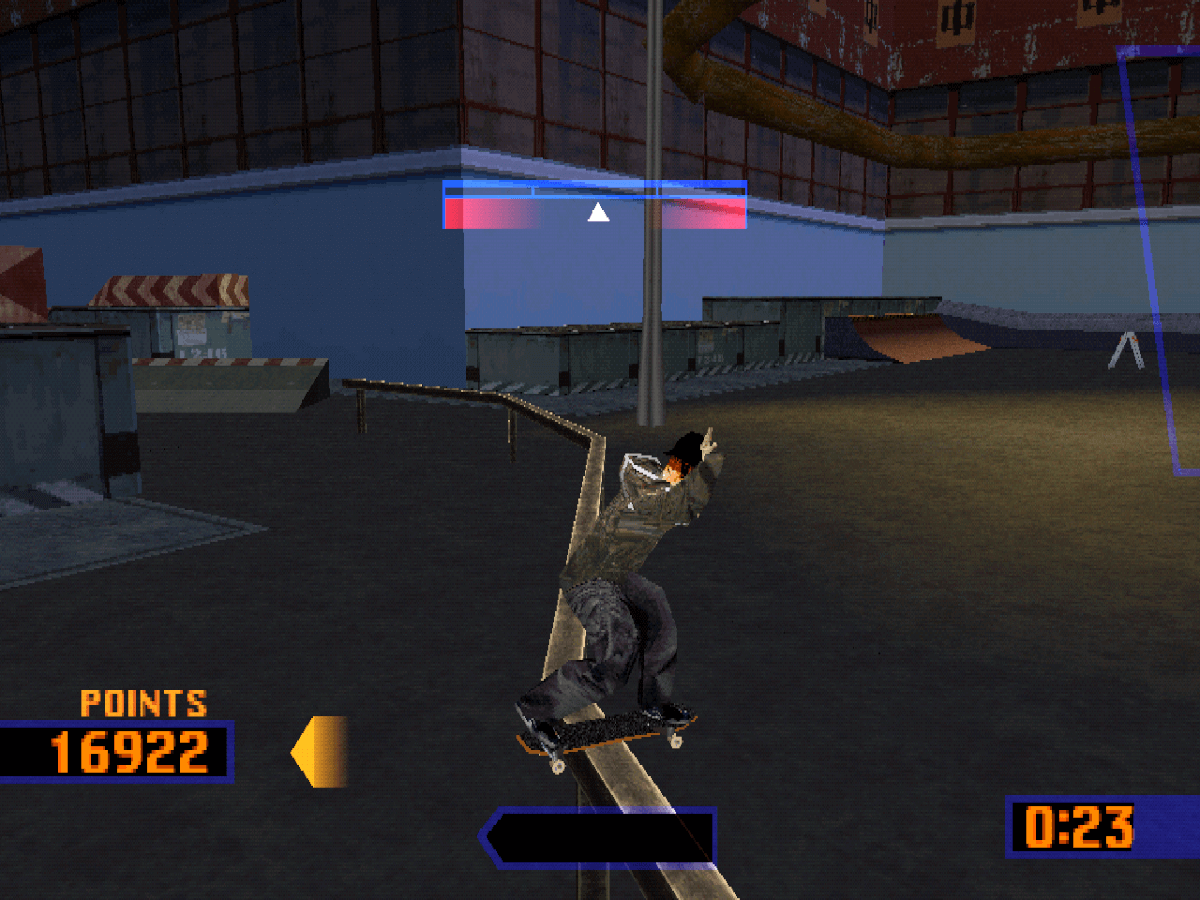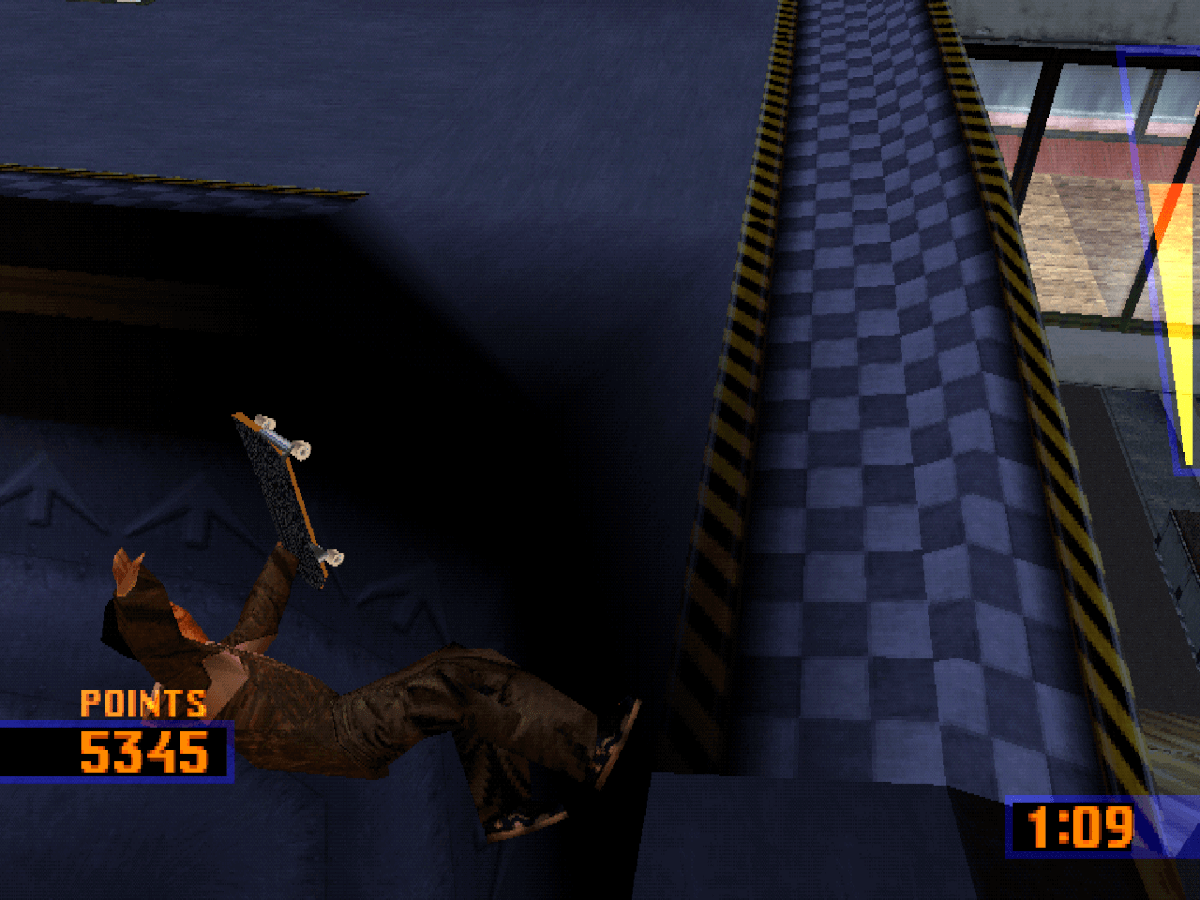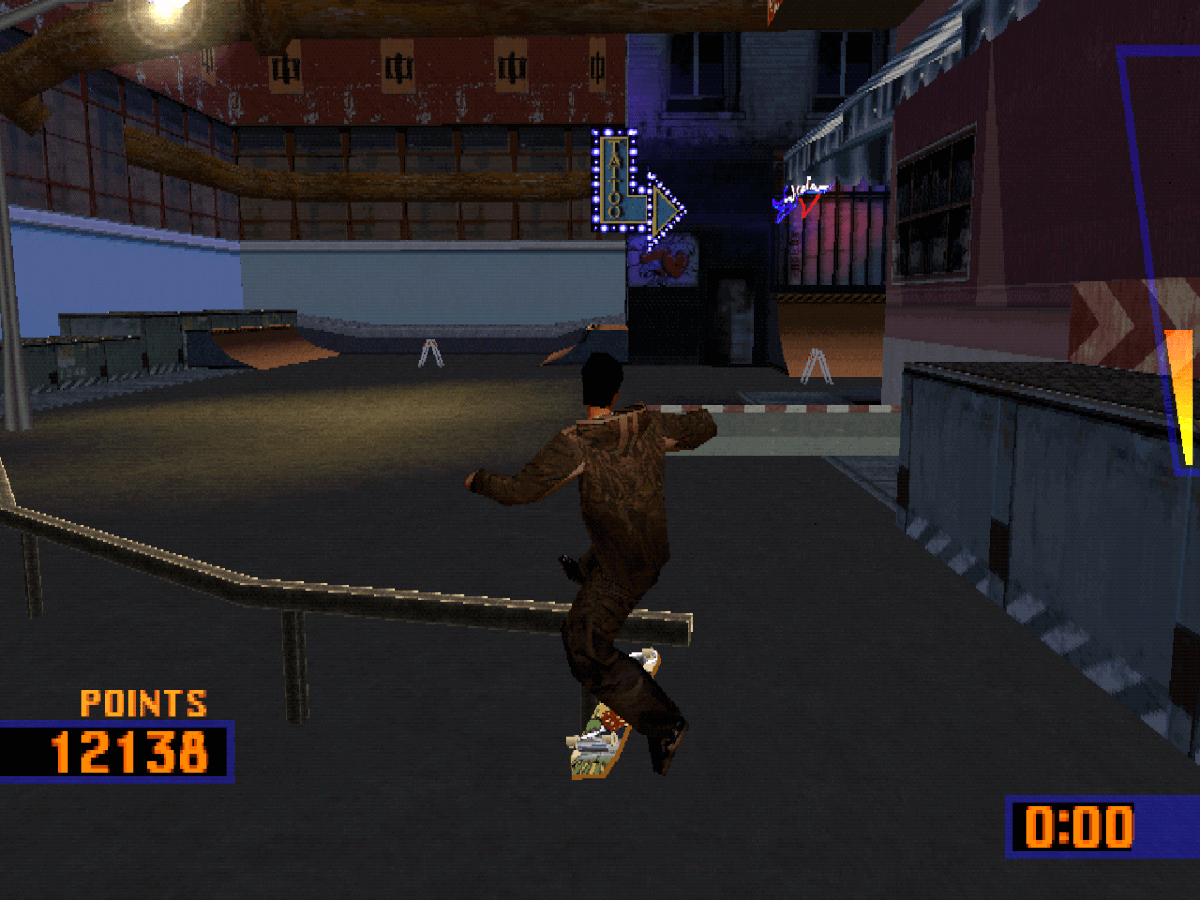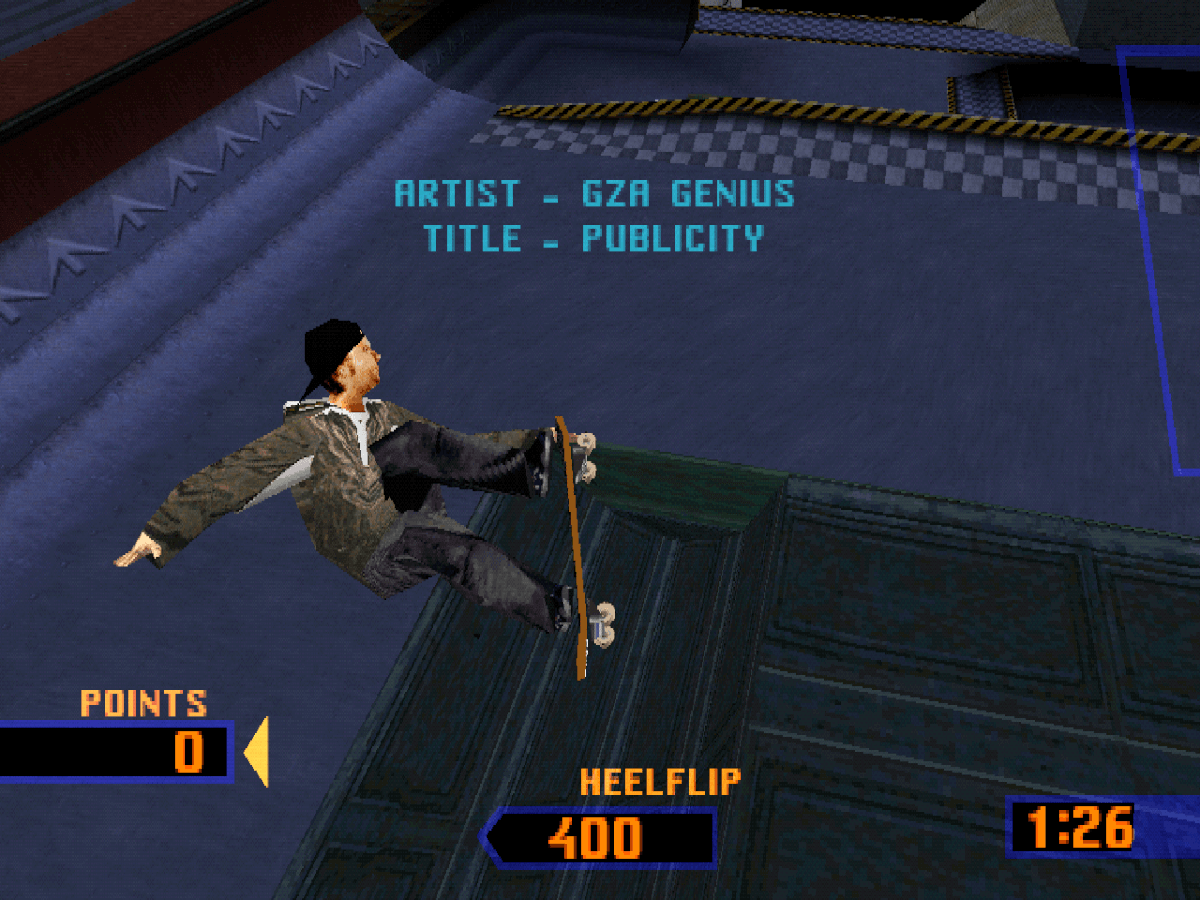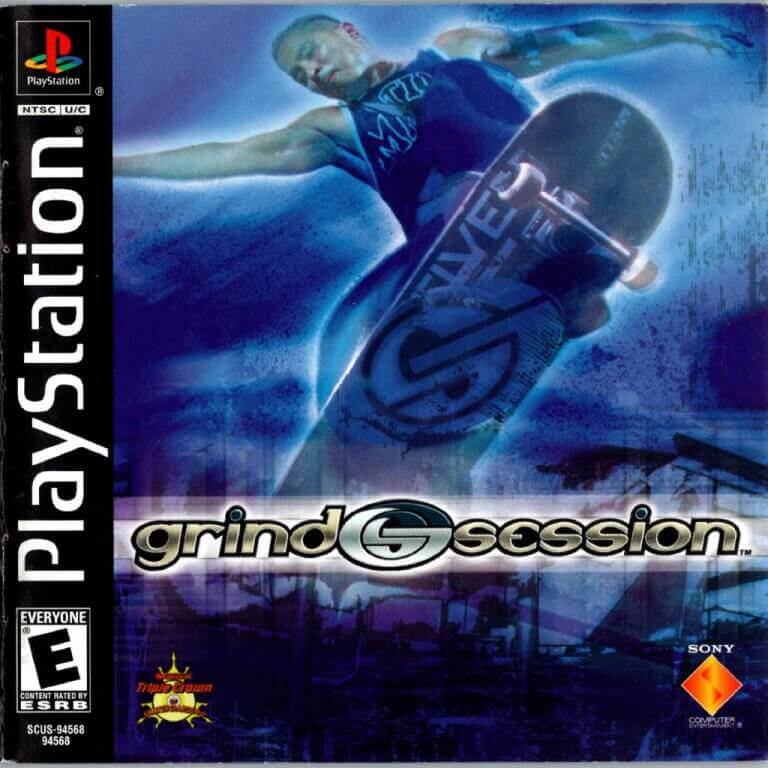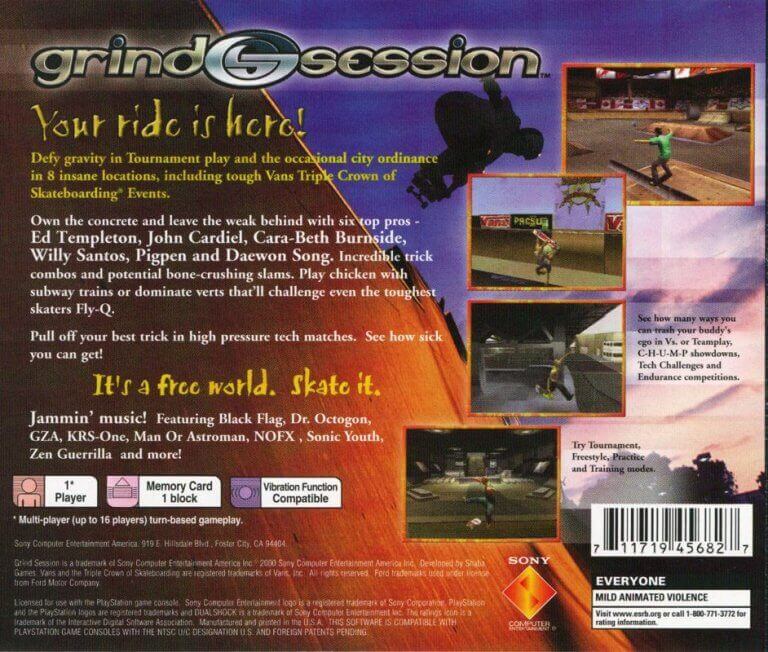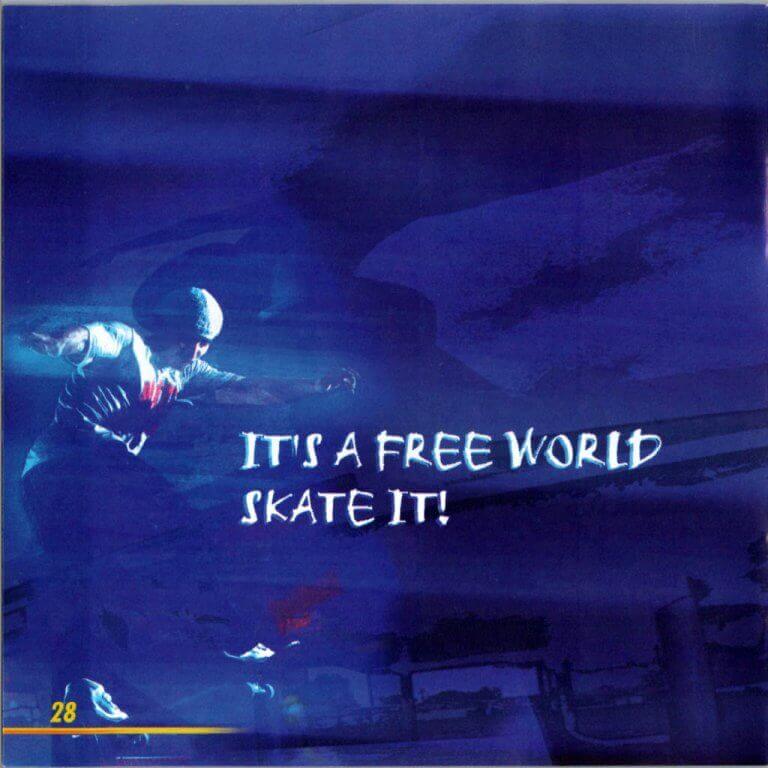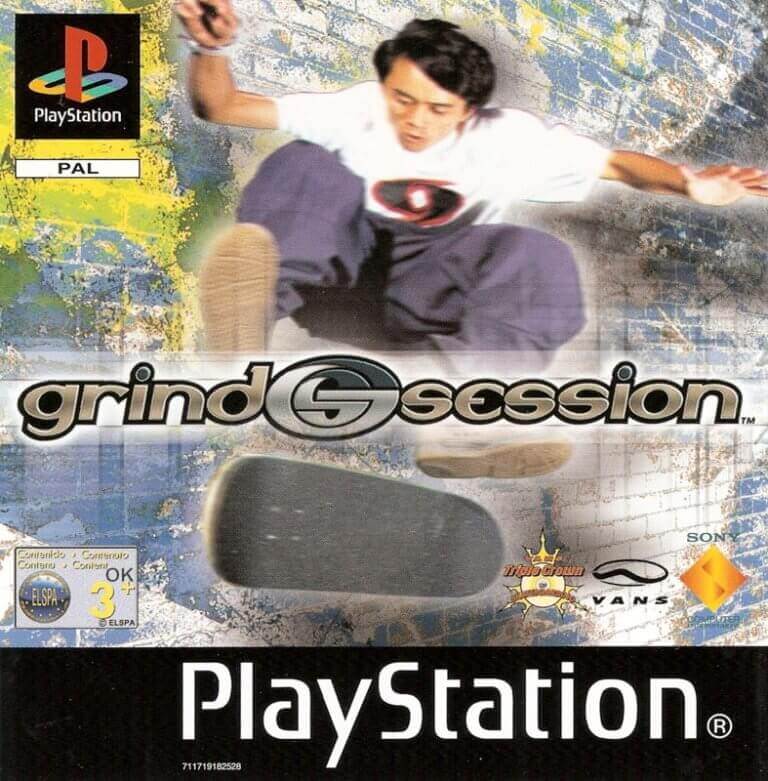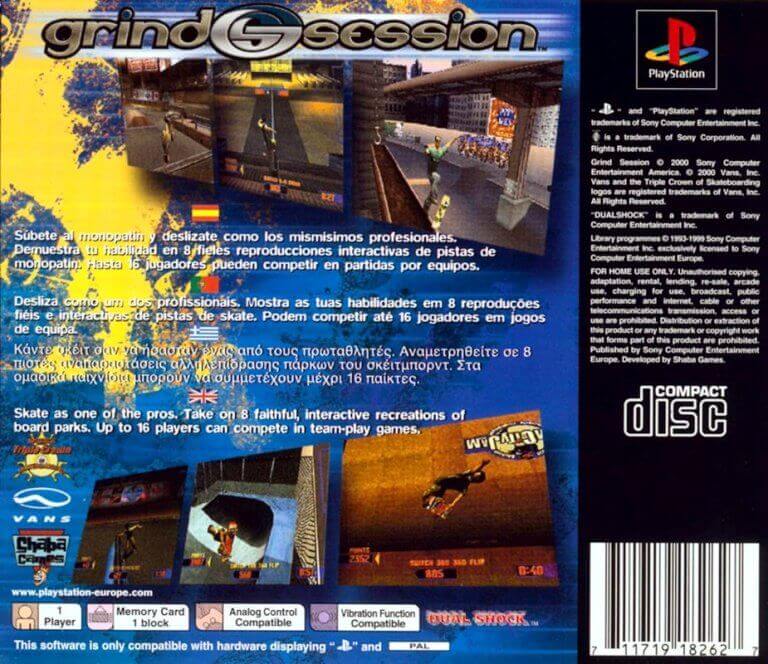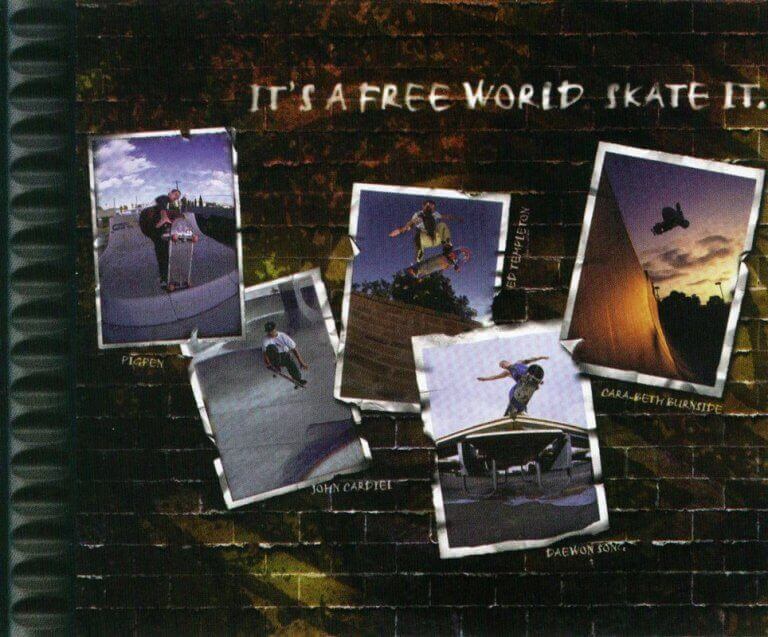Prior to 1999’s Tony Hawk’s Pro Skater, good skateboarding games were mostly confined to arcades, and while Pro Skater wasn’t the first skateboarding game for home consoles, it was the first to spawn true imitators.
Depending on who you ask, 2000s Grind Session was actually in development as far back as 1997, when Shaba Games was first formed by former members of the Crystal Dynamics team. As the story goes, Sony approached Shaba directly with an outline for a PlayStation-exclusive skateboarding game.
At this point, the only skateboarding games to have seen a release on Sony’s debut console were 1995’s ESPN EXtreme Games and 1997’s Street Sk8er, both published by Electronic Arts. Once Pro Skater hit the market, though, Shaba Games knew who the real competitor was.
Whether Grind Session was truly in development before Pro Skater or not, the game that was released in 2000 bears a striking similarity to Activision’s smash hit. The control scheme was nearly identical, as was the way the game’s progression was structured. The soundtrack, similarly, was a killer mix of punk rock, old and new, with a splash of backpack rap.
Of the few new ideas Shaba introduced, two are especially interesting and are tied to the DualShock’s triggers. Pressing L2 enabled “Skater’s Eye”, a mechanic that freezes time, allowing the player to look around the level from a fixed vantage point, eyeballing secret areas and planning complex lines.
R2 was tied to the “Technical Line” system, which would temporarily illuminate a path linking multiple obstacles across the map. This system served as a structured set of optional challenges that encouraged mastery and exploration, and ensured Grind Session‘s replayability.
Like Pro Skater and the soon-to-be-released MTV Sports Skateboarding featuring Andy MacDonald, Grind Session’s roster was stacked with legendary skaters like Daewon Song and John Cardiel, and even offered “custom” skaters. Grind Session featured real locales like the Brooklyn Banks and, interestingly, Burnside. Fans may recognize Burnside from Tony Hawk’s Pro Skater, but unlike the Pro Skater version, Grind Session‘s Burnside map allows you to hop the fence and skate the parking lot.
The decision to keep the gameplay similar was a shrewd one. It lowered the barrier of entry for new players who may already be hooked on Pro Skater, and allowed the team to focus development on the game’s large levels and unique features.
The game wasn’t without its issues, of course. Graphically, Grind Session was a mixed bag. It wasn’t ugly, per se, but it’s not uncommon to turn a corner and enter a completely nondescript hallway or tunnel. The physics were meant to be slightly more forgiving than Pro Skater‘s, but even this proved to be a double-edged sword, as most contemporary reviews mentioned that the controls were less precise as a result.
All told, though, the game was a moderate success. Reviews of the time often went out of their way to insist that, despite lacking originality, the game was in some ways better than the original Pro Skater, featuring a huge multiplayer mode and additional tricks, like manuals. The soundtrack was also singled out for praise, featuring tracks from Black Flag, Sonic Youth, KRS-One, Jurassic 5, NOFX, and more.
Grind Session didn’t technically receive a sequel, but the team wasn’t done making extreme sports games for Sony’s consoles. After Grind Session, they went on to develop other Activision-published titles like Mat Hoffman’s Pro BMX and the underrated Wakeboarding Unleashed featuring Shaun Murray.
In 2002, Activision even bought out Shaba Games and put them to work on the Pro Skater series, including the excellent PSX version of Pro Skater 3, the PSP version of Underground 2, and the PS2 version of Project 8. Aside from a couple of Shrek games and a single Spider-Man title, Shaba Games quietly released some of the best hidden gems in the extreme sports genre before shuttering in 2009.
It’s unlikely Grind Session will ever see a remake; the game can be easily emulated on all but the weakest retro handhelds, and has a very shallow difficulty curve. While most players should be able to get through it in an afternoon, features like multiplayer and “Technical Lines” have kept people coming back to the game for over 25 years now.
While it was rightfully overshadowed by Tony Hawk’s Pro Skater, Grind Session was able to do something different with some clever features and a great soundtrack. It is a rock-solid title and remains one of the best skateboarding games on the original PlayStation. It is more than a knockoff; it is a worthy entry in the skateboarding game canon.
Have you played Grind Session? Let us know in the comments below, and chat with us in our Discord!
This page may contain affiliate links, by purchasing something through a link, Retro Handhelds may earn a small commission on the sale at no additional cost to you.
